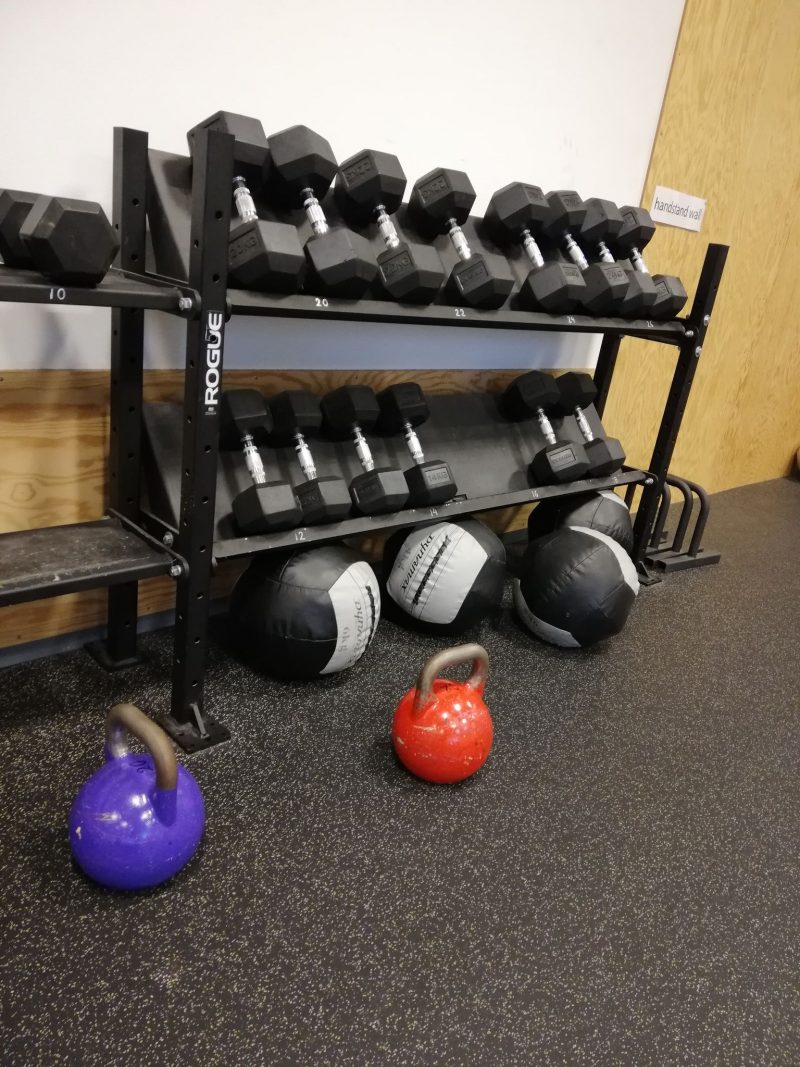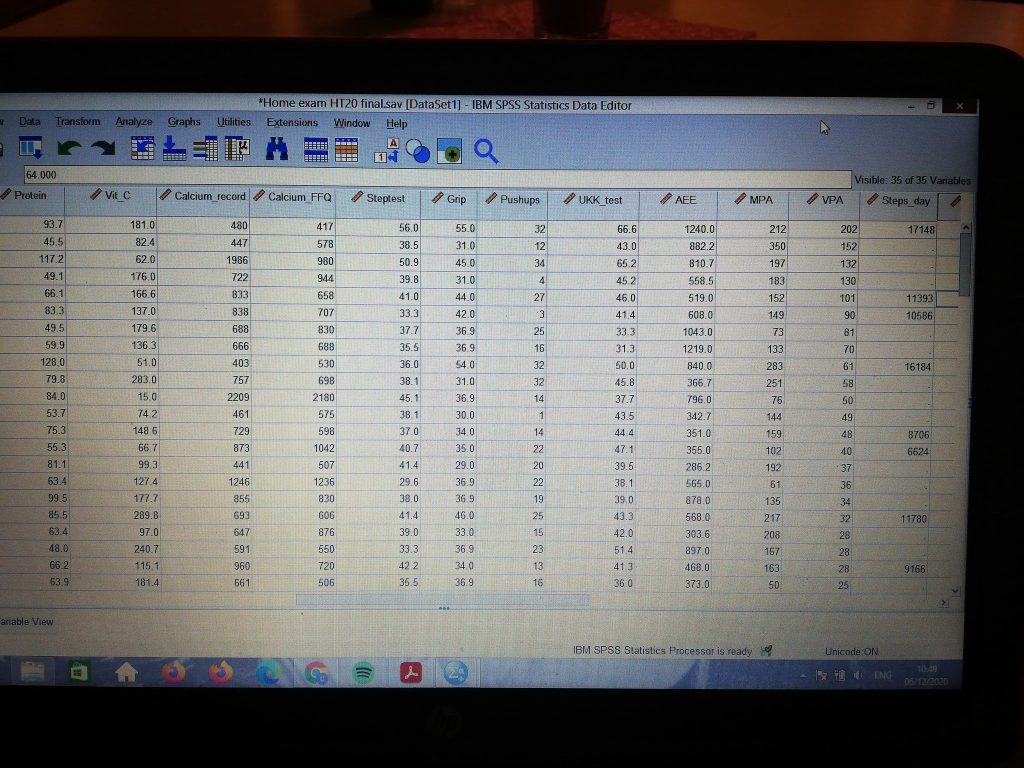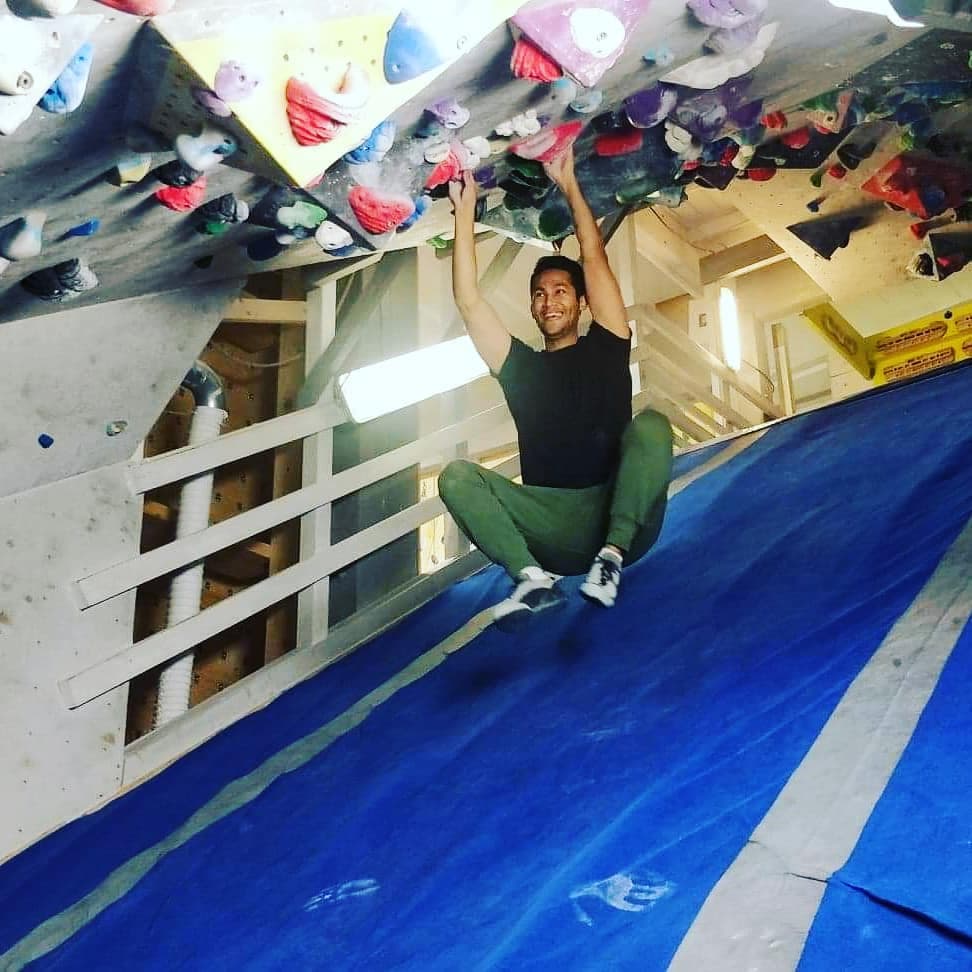
The course: Diet, physical activity and fitness – assessment and evaluation
Three courses down and only one to go before the thesis project begins, time does fly! The latest course was certainly one of my favourites and not only did we learn about the different methods used to measure diet and physical activity but we also performed these on ourselves! Actually being told to do physical exercise in an academic course is a dream for someone sporty like myself!! In this one month course you learn a lot about the validity of these different methods in fitness and diet assessment and the challenges and biases that each is subjected to. You also get a refresher on statistics and using the almighty SPSS, and of course most of all you get to perform exercise, it’s almost like being back in Physical education class
Learning topics-
- Anthropometry techniques- measuring body fat % using skinfold calipers- yes this was quite fun to do!!!! This method was compared to the more accurate method of the BioImpedence device
- Diet assessment methods, how to capture habitual diet and diet variation- Food-Frequency Questionnaires (FFQs), 24hr recalls and weighed food records
- Physical activity/exercise assessment methods- Physical activity diary, accelerometer, pedometers and questionnaires
- The link between physical activity and health- how physical activity can reduce the risk of diseases and Non-Communicable Diseases (NCD’s); and how inactivity and sedentary behavior is associated with INCREASED RISK.
- Physical fitness tests- UKK walk test, VO2 max tests, endurance tests e.g. press up test, cooper running test and hand grip strength test
- Statistics- t-test’s, ANOVA, correlation, power and effect size, Bland-Altman analysis, confidence intervals, standard errors and more…
- Physical activity and exercise has a higher potential to improve health benefits over certain medications
- Meeting the physical activity recommendations set out by the WHO 2020
These were all interesting to learn about and my favourite topics were learning about the different dietary assessment methods, performing all the physical fitness tests and performing statistical analysis on our own data! This course can inspire you to do more physical exercise, in this course we performed fitness tests, physical activity assessments and dietary assessments, including:
- Weighed 3-day food record (actually this was conducted in the 1st course: Diet and Health but we used this data on this course) and compared it to a FFQ
- Design and develop a calcium FFQ – this was a super fun task and our group designed ours to cover dietary consumption over the last year
- UKK walk test- how fast can you walk 2km? And without power walking techniques? And then estimate your VO2 max based on time, age, weight and heart rate
- 12 minute running cooper test- This was my favourite as I am getting more and more into my running, how far can you run in 12 minutes?? A test like this can really push you and can be a marker for improvement of cardiovascular fitness!
- Press up test- how many can you do without stopping? And yes your chin needs to touch the floor
- Physical activity 3- day diary- writing down your activities and applying MET scores, the higher the MET score the more intense the exercise e.g. squash = 12, playing piano = 2.5 and basketball = 8 (Ainsworth, 1993)
- Wearing an accelerometer for 3 days which is an objective method to measure steps, duration/intensity/frequency of physical activities and calculate time spent doing moderate physical activity (MPA) and vigorous physical activity (VPA)
- Hand grip strength test and sit and reach flexibility test

If you are thinking of pursuing nutrition as a masters or career and are wondering why study physical activity? The answer is that physical activity plays an important role in health and disease and both having a healthy balanced diet and regular physical activity and exercise are important in maintaining overall good health and can help to keep a positive mental health status! It is a whole other area that one can venture into and both physical activity and diet fields of research can be interlinked!
What have I taken away from this course? – the difficulties that are faced when trying to assess diet and physical activity; due to reactivity and recall bias- people tend to change their diet or underreport particular food items when being assessed and can over report physical activity or change their habitual physical activity patterns. A refresher on how to use SPSS and interpret results, why we measure diet and physical activity and thus the importance of physical activity for health and disease and that methods need to be tested for their validity to see if accurate results are being documented.

What we got assessed on-
In this course we had two seminars that were on Physical activity and chronic disease prevention and guidance for prescribing exercise (linked with WHO physical activity recommendations). These seminars just required attendance.
We had two group work assignments, which is what I really like about this masters course in general; is that there are a lot of group work activities which improves your team working skills and allows you to learn from others! These two assignments were- developing a FFQ for calcium intake, ours was designed for the Nordic population and thus included common Nordic calcium-rich products e.g. Filmjölk. The second was analysing a data set and answering statistical questions, this included around 7 questions and involved paired t-test analysis, using the Goldberg equation for assessing if a population is underreporting energy intake and testing the validity of a 24hr recall method for assessing protein intake levels. This assignment being a group project meant that those who didn’t have much statistical background could work with those that did and receive help when needed, so don’t be afraid if that is you! Furthermore the lecturer is very helpful in explaining all the statistical tests and willing to provide help at any time.
The third assignment was split into 2 parts, one being statistical analysis on your data and the other writing a small report on the validity of various physical activity and diet methods of assessment. This 1st part was similar to that of assignment two and the second included statistical analysis and displaying results/ discussing results. This assignment made me think about how to interpret statistical results, how to present these and how to consider if an assessment is relatively valid compared to another- commonly subjective assessments are compared to objective ones.
Physical activity recommendations

Being physically active is important for health and disease prevention, and there are so many ways in which you can be active and can be as simple as going for a run to going for regular walks to cycling to and from work and playing a sport such as squash (which is indoor and thus you can play it comfortably all year round!).

The recommendations above are for those aged 18-64 and minutes per week and based on scientific evidence that suggests that this amount of physical activity can provide health benefits and reduce the risk of certain disease occurrence. Also the recommendations include doing muscle strengthening exercises on 2 days of the week for more health benefits. Furthermore doing more than these suggested minutes can lead to additional health benefits, and doing VPA can help to improve your overall fitness, so don’t just stop at these recommendations, if you can do more, do more!!! Also some is better than none!!

So I motivate you to undergo physical activity and exercise in any way that you can and that is enjoyable for you!
Thanks for reading and any questions about this course or the information provided, don’t hesitate to contact me at: callum.morison.regan@stud.ki.se
Useful references-
- Ainsworth, 1993, Compendium of physical activities- https://pubmed.ncbi.nlm.nih.gov/8292105/
- WHO. WHO guidelines on physical activity and sedentary behaviour. Geneva: World Health Organization; 2020 [cited 2020 Nov 30]
- Nordic Council of Ministers. Nordic Nutrition Recommendations 2012. Integrating nutrition and physical activity. Copenhagen: Nordic Council of Ministers; 2014, chap 9
- NIHR/Cambridge Biomedical Research Centre/Medical Research Council. DAPA measurement toolkit; Physical Activity Assessment [cited 2020 Dec 01]
- NIHR/Cambridge Biomedical Research Centre/Medical Research Council. DAPA measurement toolkit; Dietary Assessment [cited 2020 Dec 01]
- WHO. WHO fact sheet: Physical Activity. Geneva. World Health Organization; 2020 [cited 2020 Dec 02]
- Garber CE, Blissmer B, Deschenes MR, Franklin BA, Lamonte MJ, Lee IM et al. American College of Sports Medicine position stand. Quantity and quality of exercise for developing and maintaining cardiorespiratory, musculoskeletal, and neuromotor fitness in apparently healthy adults: guidance for prescribing exercise. Med Sci Sports Exerc. 2011 Jul; 43(7):1334-1359.
Callum Regan- Nutrition Science
I am from Scotland and have come to Stockholm to study Nutrition Science MSc at Karolinska. I am a blogger for this course and am interested in many areas of Nutrition including ways to reduce childhood obesity and improve adolescent mental health. I love to travel, meet new people, play sport, keep healthy, watch films and listen to jazz music. I also enjoy trying food from around the World and am always searching for the best food out there!

0 comments